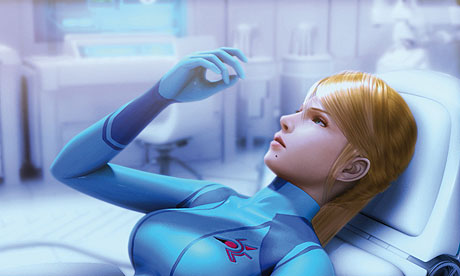
Samus, a character who's been in Nintendo's arsenal since pretty much the company's videogame beginning, gets a voice for the first time. Incredible attention went into building up the Other M story, and it's really the first time that Nintendo's produced a game on such an epic scale. It also shows just how story focused Metroid: Other M will be when the game actually starts. While this is fantastic fan service for anyone who's played through Super Metroid, this elaborate sequence is also meant to introduce Samus to an audience that might not understand just how independent and bad-ass this intergalactic bounty hunter truly is. The game starts out, almost literally, with a massive bang: the opening scene is an amazing recreation of the climax of Super Metroid, with Samus battling with Mother Brain and the baby Metroid sacrificing itself to save the bounty hunter – and help her defeat the massive beast. Its straightforward controls certainly have been made to build the design to be more accessible than, say, the first-person shooter style that Retro devised for the Metroid Prime franchise, but don't mistake this approach to be anything less than a hardcore gamer's experience. The feeling of the old-school design is here, but it's been developed with current generation standards in mind-dynamic 3D camera, first person perspective, and an incredible focus on cinema-style storytelling. With a few exceptions, Nintendo's Mario remake could have been done on a previous Nintendo console. Metroid: Other M Nintendo Wii Review - Video Review Metroid: Other M is not a retro throwback in the same way New Super Mario Bros. This, along with a return to the third-person scrolling camera - brings back the feeling of the old-school Metroid experience, and ultimately Nintendo and Team Ninja succeed in that effort. Metroid: Other M has been designed to utilize the Wii remote exclusively as its only way to play.

This Wii sequel, developed in collaboration between Nintendo and Tecmo's Team Ninja (best known for its work on Dead or Alive and Ninja Gaiden series), is sort of a hybrid of a retro remake and a contemporary sequel: classic and familiar gameplay elements repurposed in a current generation experience.


 0 kommentar(er)
0 kommentar(er)
